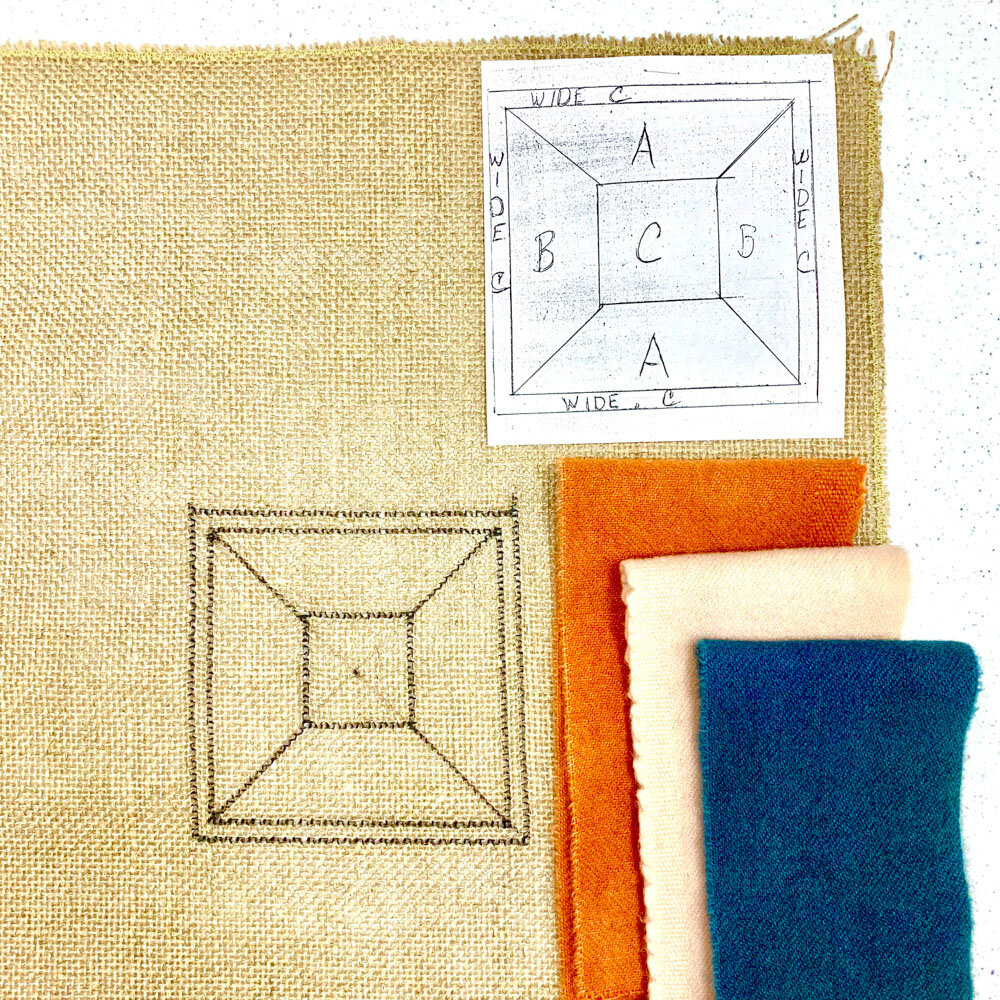Rug Hooking at the Folk School
Last week I had the pleasure of returning to the John C. Campbell Folk School in Brasstown, NC for an intro to rug hooking course. This fascinating fiber art form is something I’ve wanted to learn for years, but I was having a hard time finding anyone locally who could teach me (or who had ever heard of rug hooking, for that matter). The history of traditional rug hooking is interesting, and the craft itself is quite remarkable, but I had a very specific reason for wanting to learn this new medium. I knew somehow, some way, I wanted to incorporate this dimensional texture into my existing needle felting work. Even though I could easily envision how I’d combine the two mediums, I had absolutely no idea where to start, so when I saw there was a rug hooking course coming up at the Folk School, I knew the stars had finally aligned and it was time to find out if this idea was possible.
The Folk School is located in the misty Appalachian mountains, about as far west as you can go and still be in the state of North Carolina. It’s remote, it’s beautiful, and it has a special community that’s been teaching a variety of traditional handicrafts for nearly 100 years. You can learn blacksmithing, chair caning, felt making, book binding, metal smithing, pottery, glass bead making, photography, wood turning, and weaving, just to name a few. The class sizes are small, typically less than 10 students, and you learn by total immersion. By the end of my week, I had put in 40 hours in the fiber art studio!
The first hour of class, we learned about the tools, materials, and techniques required for rug hooking, and then we were off to hook our first practice piece – a small coaster, using a simple log cabin pattern. Learning to hook a rug seems simple, but it’s not simple at all. After cutting thin strips of wool, you use a hooked hand tool and pull them through the open weave of a piece of fabric. It sounds so basic, but there’s a lot to it. You have to pull the loops through the fabric just so, and space them out enough, but not too much. You can work with a predetermined pattern, but after my first practice piece, I chose to make up my own or work free form.
By day two, I was hooking away on my first large piece and finally had the chance to try out my idea of combining rug hooking and needle felting, and I’m thrilled to say – IT WORKED! I hooked a landscape, creating a foreground and mountains with little loops of wool, then I needle felted the sky with roving. I absolutely love how the two wool textures look together. I’m comfortable with landscapes, I make them almost daily (in felt), so this seemed liked a good place to start.
The third day, I tried a more abstract piece, a longer tapestry wall hanging in a pale color palette, still experimenting with mixing roving with the wool “noodles” I was hooking through the linen background fabric. I also learned various ways to finish the pieces, like binding the edges with yarn. My loops aren’t perfect, my edges aren’t straight, I ran out of wool so the finished piece is about an inch shorter than I had been planning, by I learned so much by the time this one was finished and I’m in love with the irregular pattern and soft earthy colors.
Towards the end of the week, I challenged myself to try hooking precise geometric shapes with curves and points, change colors more often, work with smaller scale fabric strips, and switch directions with my loops. I created two more pieces, both using scrap wool and remnants. I also went bold with my color choices and have no regrets about that!
After my first 40 hours of rug hooking, all in one week, I’m only just starting to understand how it works. I’m a beginner and will be for quite some time, my work is far from perfect, but I’m so happy to be off on this new adventure in a different medium that compliments what I’m already doing. My fiber art is bound to change in the future, and that’s exciting in so many ways.
Check out this short 5 minute video showing highlights of the week, time-lapse footage of my first few hooking projects, and work from the other students in various classes.
I would like to extend a special thanks to Metropolitan Arts Council (MAC) who made this educational undertaking possible by awarding me a grant to help fund my week at the Folk School plus the investment of the new tools and equipment required to continue to pursue a new dimension in my fiber art. Thank you thank you thank you!
This program is funded in part by the Metropolitan Arts Council which receives support from the City of Greenville, BMW Manufacturing Company, Michelin North America, Inc., SEW Eurodrive and the South Carolina Arts Commission.











